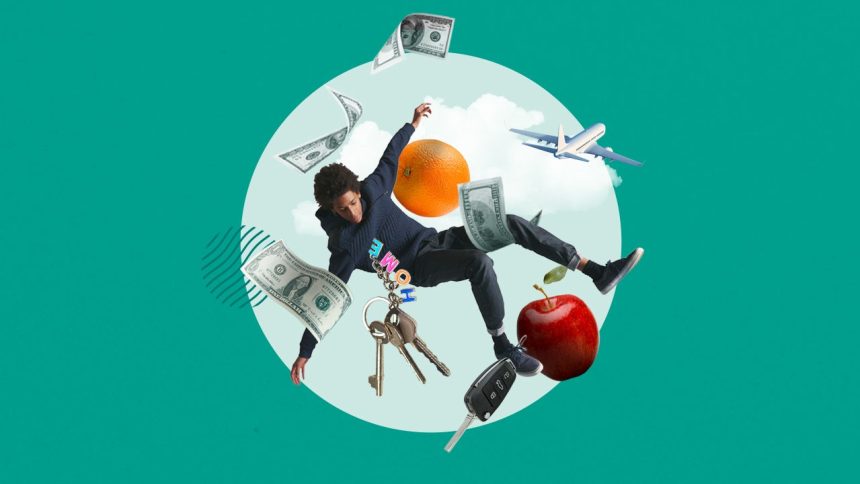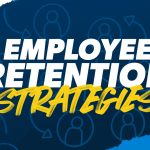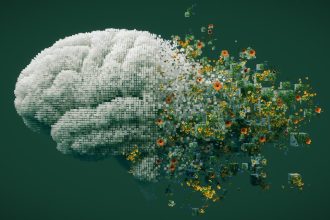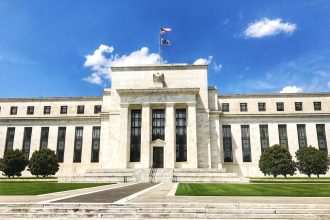Key takeaways
- The current inflation rate is 3.5%, with shelter, motor vehicle insurance and energy the current main contributors.
- Prices have risen 20.4% since the pandemic-induced recession began in February 2020, with just 5% of the nearly 400 items the Bureau of Labor Statistics tracks cheaper today.
- The Federal Reserve is closely monitoring inflation and has raised interest rates to combat it, but the U.S. economy remains resilient — threatening to keep inflation elevated.
Prices aren’t rising as quickly as they once were, but the worst inflation crisis in 40 years is far from over.
Since February 2020, consumer prices have jumped 20.4 percent, a Bankrate analysis of Bureau of Labor Statistics data shows. That’s well above the historic average for a four-year period. For comparison, inflation rose 18.9 percent in the 2010s, 28.4 percent in the 2000s and 32.4 percent in the 1990s.
A little bit of inflation is good for consumers. The economy keeps growing and businesses continue expanding, hiring workers and bumping up their pay along the way. Too much inflation, however, feels akin to taking a pay cut. The post-pandemic price burst means Americans would need about $1,200 to buy the same goods and services that cost $1,000 when the coronavirus-induced recession occurred. High inflation has consequences beyond just affordability, complicating saving for emergencies or investing for retirement.
The latest reports from the consumer price index (CPI) — the ultimate scorecard for consumers wishing to track how much the goods and services they frequently buy are rising — have dashed experts’ hopes for a quicker-than-expected return to “goldilocks” inflation. Economists in Bankrate’s latest quarterly poll say there’s a risk that inflation could stay hot until 2026.
Looking for the latest information on consumer prices? Here’s a round-up of where inflation is improving — and where it’s still remaining stubborn.
The lack of progress toward 2 percent inflation is now a trend.
— Greg McBride, Bankrate Chief Financial Analyst
Highlights of the latest statistics on inflation
- Overall inflation in March 2024: 3.5%, up from 3.2% in February
- Core prices (excluding food and energy): 3.8%, no improvement from last month’s 3.8% increase
- Food prices: 2.2%, matching 2.2% in February
- Food away from home (dining out at restaurants): 4.2%, down from 4.5%
- Food at home (groceries): 1.2%, up from 1%
- Services: 5.3%, up from 5% in February
- Energy: 2.1%, up from -1.7% in February
- Gasoline: 1.3%, up from -3.9% in February
- Motor vehicle insurance: up 22.2%, up from 20.6% in February
- New vehicles: -0.1%, down from 0.4% in February
- Used cars and trucks: -1.9%, down from -1.4% in February
What is the current inflation rate?
Inflation rose 3.5 percent in March from a year ago, the sharpest increase since September, the latest Bureau of Labor Statistics report showed. Excluding the volatile food and energy categories, so-called core prices held at 3.8 percent in March.
The latest figures suggest that slowing inflation is now losing some momentum. Inflation hasn’t improved for 10 months, when the annual rate hit 3 percent for the first time in June 2023. Core prices have also begun moving sideways, barely improving from the 4 percent level they officially reached four months ago in October.
Taken together, however, inflation is still well below its peak in June 2022, when it smashed 9.1 percent.
Prices that are rising the most
Of the nearly 400 items that BLS tracks, more than 2 in 3 (or 67 percent) increased in price between March 2023 and 2024. Almost half (49 percent) picked up speed from the prior 12-month period and rose faster than the Fed’s preferred 2 percent target (45 percent).
According to BLS, these are the prices that increased most over the past year:
| Item | March 2023-March 2024 increase |
|---|---|
| *Denotes an item that isn’t seasonally adjusted | |
| Video discs and other media* | 30.1% |
| Frozen noncarbonated juices and drinks* | 27.5% |
| Motor vehicle insurance | 22.2% |
| Repair of household items* | 18% |
| Care of the sick and elderly at home* | 14.2% |
| Motor vehicle repair | 11.6% |
| Uncooked beef roasts | 11.2% |
| Domestic services* | 10.9% |
| Transportation services | 10.7% |
| Baby food and formula* | 9.9% |
Month-over-month price changes can also give consumers a more real-time look at the prices that have recently been popping, though consumers should take seasonal variations into account. BLS doesn’t seasonally adjust all of its items, and year-over-year inflation rates can better smooth out those variations.
According to BLS, these are the prices that increased most over the past month:
| Item | February 2024-March 2024 increase |
|---|---|
| Video discs and other media* | 14.7% |
| Care of the sick and elderly at home* | 5.9% |
| Girls’ apparel | 5.9% |
| Lettuce | 5.9% |
| Eggs | 4.6% |
| Recreational books* | 4.5% |
| Purchase, subscription and rental of video* | 3.8% |
| Pork chops | 3.3% |
| Motor vehicle repair | 3.1% |
| Other pork, including roasts, steaks and ribs | 3% |
Why is inflation so high right now?
Consumers might look at the massive 30.1 percent increase in video discs and other media — the largest increase ever — and wonder why the overall inflation rate is just 3.5 percent. To put it simply, the Bureau of Labor Statistics assigns weights to each individual good or service it tracks, based on how prevalent it’s considered to be in a consumer’s monthly budget.
Currently, the largest contributors to inflation are shelter, motor vehicle insurance and energy.
- Taken together, energy and shelter were responsible for more than half of the monthly 0.4 percent increase in prices between February and March 2024, BLS said.
- Over the past 12 months, shelter has accounted for more than half (56 percent) of the increase in prices. Put another way, if shelter had remained stable, prices would have only risen 1.5 percent from a year ago.
- Over the past 12 months, inflation would have risen just 2.9 percent had motor vehicle insurance costs remained stable.
The drivers of inflation have changed dramatically since the initial post-pandemic price burst. When price pressures peaked in June 2022, shelter was driving just 20 percent of the annual increase in prices. But as consumers emerged from lockdowns with massive pent-up demand at the same time as global supply shortages, energy was driving about a third (32 percent) of inflation, while food prices were driving 15 percent of inflation.
The changing drivers of inflation have evolved as much as the U.S. economy. Supply chains have untangled since the pandemic, helping take the pressure off of goods inflation. However, services such as rent, insurance and even the price of dining out can take months, if not years, to fluctuate — depending on what’s happening with labor costs and consumer spending.
To combat inflation, officials on the Federal Reserve have lifted borrowing costs from a rock-bottom level of near-zero percent to a 23-year high of 5.25-5.5 percent. Yet, the U.S. economy has remained surprisingly resilient, underpinned by a job market with an unemployment rate below 4 percent for the longest stretch of time since the 1960s.
“Rapidly rising housing costs continue to be the economy’s Achilles’ heel and the inventory crunch brought about by mortgage rate hikes isn’t exactly helping,” says Julia Pollak, chief economist at ZipRecruiter. “While we are seeing deflation in core goods prices, it is simply not enough to offset the enduring heat in services inflation.”
Post-pandemic inflation: What’s risen the most and what’s gotten cheaper
Of the nearly 400 items BLS tracks, just 19 (or roughly 5 percent) are cheaper today than they were pre-pandemic. More than 2 in 5 (45 percent) of those items rose at a faster clip than overall inflation.
To be sure, prices are expected to rise in the healthiest of economies — though only gradually, at a goalpost of around 2 percent a year.
According to BLS, these are the top 10 items that have jumped the most in price since the pandemic:
| Item | February 2020-March 2024 increase |
|---|---|
| *Denotes an item that isn’t seasonally adjusted | |
| Eggs | 56.3% |
| Margarine | 54.3% |
| Frozen noncarbonated juices and drinks* | 50.7% |
| Other fats and oils, including peanut butter | 45.8% |
| Fuel oil | 45.7% |
| Motor vehicle repair | 45.7% |
| Motor vehicle insurance | 43.5% |
| Repair of household items* | 41.5% |
| Fuel oil and other fuels | 41.3% |
| Leased cars and trucks | 39.4% |
Meanwhile, the items that have dropped in price the most since the pandemic are primarily goods and electronics — largely thanks to improving supply chains.
| Item | February 2020-March 2024 decrease |
|---|---|
| Smartphones* | -52.6% |
| Telephone hardware, calculators, and other consumer information items | -44.3% |
| Televisions | -21.6% |
| Information technology commodities | -21.3% |
| Health insurance* | -18.6% |
| Education and communication commodities | -18.5% |
| Computer software and accessories* | -13.9% |
| Video and audio products | -11.7% |
| Other video equipment | -11.2% |
| Men’s suits, sport coats, and outerwear | -7.5% |
Inflation breakdown by product category
Looking for an easy analysis of how inflation is impacting the key items in your budget? Here’s what Bankrate found.
-
Over the past 12 months, gasoline prices have risen 1.3 percent, well below the peak jump of 59.9 percent in June 2022 but still the first year-over-year increase since September 2023. Those recent gains have been evident at the pump: Fuel prices have increased across all 50 states over the past month, AAA data shows. Taken together, prices at the pump are still 34.8 percent more expensive than they were in February 2020.
-
Grocery prices (formally known as food at home) rose 1.2 percent from a year ago and are still 25.2 percent more expensive than they were before the pandemic, BLS data indicates. At their peak, grocery prices soared 13.5 percent in July 2022 from a year ago.
Of the major shopping categories:
- Meats: up 3.4 percent over the past year and 26.5 percent since February 2020
- Fish and seafood: down 2.6 percent from a year ago but still up 16 percent since the start of the pandemic-induced recession
- Dairy: down 1.9 percent over the past year but still 18.9 percent more expensive since the pandemic
- Fruits and vegetables: up 2 percent over the past year but 18.2 percent more expensive than before the pandemic
- Sugar and sweets: up 4.3 percent from a year ago and 28 percent since the pandemic
Meanwhile, the price of dining out (formally known as full service meals and snacks) jumped 4.2 percent from a year ago, capping off a 25.8 percent increase since the pandemic.
-
Rent has become one of the most costly categories of a consumer’s budget.
Rent of primary residence in March jumped 5.7 percent from a year ago, BLS data shows. To be sure, rent prices aren’t rising as quickly as they once were, at one point surging 8.8 percent over a 12-month period back in March and April 2023. Yet, Americans who’ve had to sign new leases since the outbreak are feeling the pinch: Rent is up 22.6 percent since the pandemic.
Real-time measures show that rents aren’t rising as quickly as they were at the height of post-pandemic lockdowns, though a sharper slowdown hasn’t yet been reflected in the official BLS monthly report. One reason could be because of lags, even longer than usual for shelter prices as leases and housing agreements take longer to roll over from the previous year. Another could simply be because homes have stayed pricey, keeping more renters on the sidelines than usual.
-
Inflation hasn’t just made the prices of key household essentials — but the costs of vacations and travel, too. Airline ticket prices, for example, once soared as much as 43 percent from a year ago in September 2022.
Those prices are finally starting to level off, though a resurgence in fuel and energy costs could jeopardize that slowdown in prices.
- Airfares: down 7.1 percent from a year ago and 0.3 percent cheaper since February 2020
- Car and truck rental: down 8.8 percent from a year ago but up 24.5 percent since the pandemic
- Hotels and motels (lodging away from home): down 2.4 percent from last year but 13.8 percent more expensive than before the pandemic
-
Owning a car has been especially pricey since the pandemic, from the cost of the car itself and the interest rates that finance it to the repair and insurance costs required for upkeep.Making car inflation hard to escape, the majority of households (roughly 92 percent) owned at least one car in 2022, according to the Census Bureau.
- Motor vehicle insurance: up 22.2 percent from a year ago and 43.5 percent since the start of the pandemic in 2020
- Vehicle repair: up 11.6 percent from a year ago and 45.7 percent since February 2020
- New vehicles: down 0.1 percent since March 2023 but still 20.7 percent more expensive since February 2020
- Used vehicles: down 1.9 percent since March 2023 but 30.2 percent more expensive
- Leased vehicles: up 1.1 percent from a year ago and 39.4 percent since the start of the pandemic
The different methods of measuring inflation: PCE versus CPI
- Overall inflation in February 2024: 2.5% from a year ago, up from the 2.4% pace in January
- Core prices (excluding food and energy): 2.8% from a year ago, down from last month’s 2.9% annual pace
- Food prices: up 1.3% from a year ago, down slightly from 1.4% in January
- Services: up 3.8% from a year ago, down slightly from 3.9% in January
- Energy: down 2.3% from a year ago, though still up 31.7% since February 2020
Fed policymakers look at the full picture of economic data when setting interest rates. But officially, they prefer a different measure to see whether they’re succeeding at controlling inflation: the Department of Commerce’s personal consumption expenditures (PCE) index.
But that preference has been keeping Fed watchers on their toes. Lately, the PCE index has been indicating slower inflation, with overall prices just half a percentage point above the Fed’s target — compared to a hotter 1.5 percentage points as shown with CPI.
Those variations have always been afoot. Mainly, they’re because of methodology differences. For starters, PCE takes consumers’ substitutions into account (for example, one family’s decision to buy fish over meat for one month because it’s cheaper).
But another key difference is to blame lately. Both agencies estimate an item’s relative importance differently, with BLS’ gauge giving the most weight to the category of inflation that’s coincidentally been the hottest: shelter.
For Fed officials, the story remains largely the same: Inflation is slowing but still stubbornly above their 2 percent goalpost. Yet, when officials do decide to change policy — including cutting interest rates — the variations could make the decision trickier. Fed officials don’t want to risk cutting interest rates too soon, for fear that it could stoke even higher inflation if it causes demand to rise again.
“While this report is not what the Fed wants to see, most of the inflationary gains are concentrated in housing and car insurance, sectors that are expected to calm down eventually,” says Tuan Nguyen, U.S. economist at RSM. “It’s reasonable to expect that inflation could start going down again in the next month or two.”
Takeaways for consumers
For consumers, the message is clear: Inflation has cooled dramatically since peaking in the summer of 2022, though it remains undefeated. The ultimate question now is whether the U.S. economy’s resilience is keeping inflation elevated. If it is, the Fed might need to slow the financial system down more to finish the job, ultimately risking consumers’ paychecks and employment if it dents the robust job market.
- Expect higher-for-longer rates from the Fed: Fed Chair Jerome Powell has said that officials need to cut interest rates long before prices hit 2 percent on an annual basis. If they don’t, they risk slowing the economy down too much for too long. Yet, officials say they need more confidence that inflation is retreating back to their target, meaning interest rates are likely to remain high — keeping borrowing costs expensive but savings yields lucrative.
- Comparison shop as much as you can: Consumers know to compare offers from multiple lenders before locking in a loan. Why not the same for the items you buy on a regular basis? Comparison shopping can help make sure you’re buying the cheapest product on the market. Compare prices at multiple retailers, see if any stores offer price match and craft a budget. If a product or ingredient pushes your spending goal over the edge, consider swapping it out for something else.
- Use the personal finance tools at your disposal: Finding the right credit card that helps you earn rewards on the purchases you were already going to make can be another way to pad up your wallet. Just be sure you’re not carrying a balance. A 20.75 percent interest rate will never outweigh the cash back.
- Save for emergencies and find the right account: Historically, investing in the markets has been the best way to beat inflation, but today’s high-rate era means savers can find a market-like return without any of the risk. Stash your cash in a high-yield account or add a longer-term CD to your portfolio, so you can lock in these elevated yields for the long haul.
See how all items BLS regularly tracks have changed over time
-
Bankrate analyzed 380 items from the Bureau of Labor Statistics’ consumer price index (CPI) to determine how much specific items have increased in price on both a month-over-month basis, year-over-year basis and then on a pre-pandemic basis (defined as February 2020, when the coronavirus pandemic-induced recession was officially determined to have begun). Bankrate then ranked each item from slowest to fastest appreciation, focusing on the top and bottom 10 in each category, in addition to key aspects of Americans’ budgets. When given the choice, Bankrate chose an item’s seasonally adjusted index.
Read the full article here
















